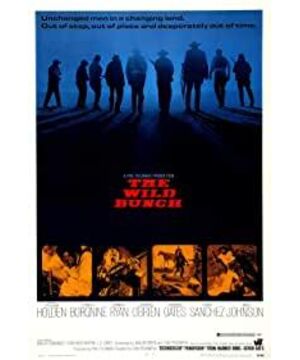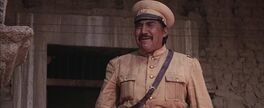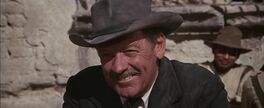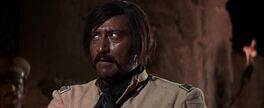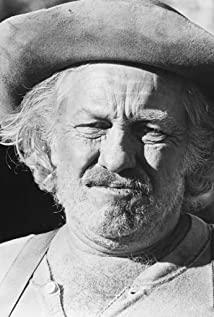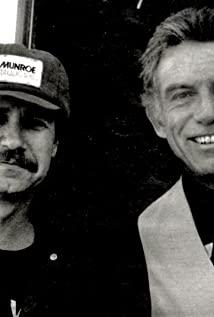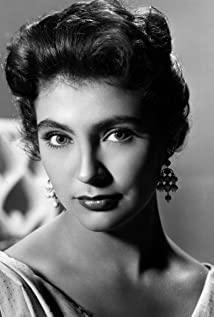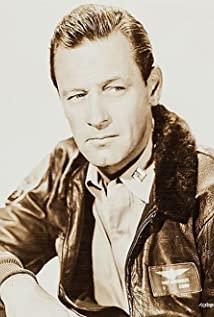The story takes place on the US-Mexico border in the early 20th century. The opening scene shows a group of Mexican kids dropping a scorpion in a basket full of ants in the countryside. Although the scorpion was big, it was tumbling like a frying pan among the tens of thousands of ants. In the end, the child threw the fire into the basket. It is conceivable that the ants and the scorpions came to an end painfully in the eighteenth hell. This is a picture that I will remember many years later. It can satisfy a certain cruel curiosity hidden in people's hearts, and it also tells the audience how humble life is in the world shown in the film, and hints at the fate and ending of the final characters.
What follows is probably the most intense and bloody shootout in film history. The protagonists of this movie are a group of western cowboys. It's more accurate to say gangster than cowboy. They launched a bank robbery. First they took hostages. Their leader gave a death order, and anyone who dared to move would be killed immediately. The subordinates did the same. Then they robbed the money, and there was a fierce gun battle with the government soldiers and police who came. In the end, they succeeded in breaking through with their battle experience and the incompetence of the police, and they also swept away the money. Nonetheless, the Shawshank Redemption Andy's hideaway is absent from this film. Although the world is big, there are dangers everywhere. When they arrived in Mexico, they not only had to deal with the bounty hunters sent by the U.S. government, but also had to deal with the head of the local military government in Mexico (that is, a warlord, a local emperor). They have spent a lot of money, they have had internal strife and disputes, and they have also had a rush. The climax of the plot appeared when one of them was tortured to death after being caught by the warlord leader. After the conflict of revenge or leaving, the field group finally took up all the weapons without hesitation, for the sake of the dead brother and the warlord. One last shot, even though they both knew what that would mean. Sorry for the pale language of the last battle, because good mirroring and photography are indescribable. There are no lone heroes here like Arnold in True Lies. Four people weighed machine guns and small cannons against hundreds of people, and the choice between life and death would not be a miracle. I can't remember whether the warlord leader was beaten in the end, but this is no longer important.
In this film, the lines between good and evil are blurred. As far as the field group is concerned, they were originally bandits. They are bloodthirsty, gamblers, and play with women. But even living in such a world, they can all face it calmly (writing here reminds me of Lin Daiyu's sigh in A Dream of Red Mansions, 'Three hundred and sixty days a year, the wind, sword, frost and sword are fierce, maybe different people use it in the The same is true for different situations below). They are optimistic, righteous, unyielding, and finally give up fleeing with wealth and choose to die generously. In today's world that advocates civilization and rules, there are some precious qualities that modern people have no chance to practice, so that they may be degraded.
In turn, governments that routinely represent justice and justice are examples of corruption. Of course, the first thing the Yankees spared no effort to destroy is the image of Mexico. The general of that government is a bandit who rides on others to make a fortune. The satire of America is more subtle. It was in the process of civilization in the United States that the field group was expelled by this civilization and went to another country. And that kind of civilization is the civilization of merchants, and it is just plundering in a so-called civilized way. Bounty catchers are an example. So they can't get along even if they go back to America. I think this may also be a deep-seated reason why they are finally willing to choose Yusui. The rules of the game have changed. The era of the West is a thing of the past.
The film was shot in the late 60's. It is said that there are American allusions to the Vietnam War, but due to my own estrangement from American culture, I don't see much of it. Just thought it must have been influenced by Sergio Leone's spaghetti westerns. The director of this film is Sam Parkinpa, who is my favorite director. It should be said that he is the originator of violent aesthetics. Woo Yusen himself admitted that he was deeply influenced by him. Interestingly, in the same year, there was a more famous western film called Tiger and Leopard. At the end of the two films, it seems to coincide, and they are both fixed in the fierce gunshots, and they do not directly let people see the death of the protagonist. It can be regarded as a minimum reserve of violence.
Finally, I want to mention that I liked reading Gu Long's novels a long time ago. After watching some movies, I found out that Gu Daxia, who graduated from the British and American Literature major of Tamkang University, is not a vegetarian in his profession. He must have also read a lot of Western novels and movies. This is also reflected in his own work. The most famous is the horse head in the Meteor Butterfly Sword. As for the artistic conception, and the loyalty he has always described, after reading the field battle group and the past in the west, I think I found Gu Long's teacher. Of course, this is just a guess. Believe it or not, you can just laugh it off.
Another note: watching the film is a long time ago, and there is no review material. Access is unavoidable, and all slabs are collected according to the bill.
View more about The Wild Bunch reviews


